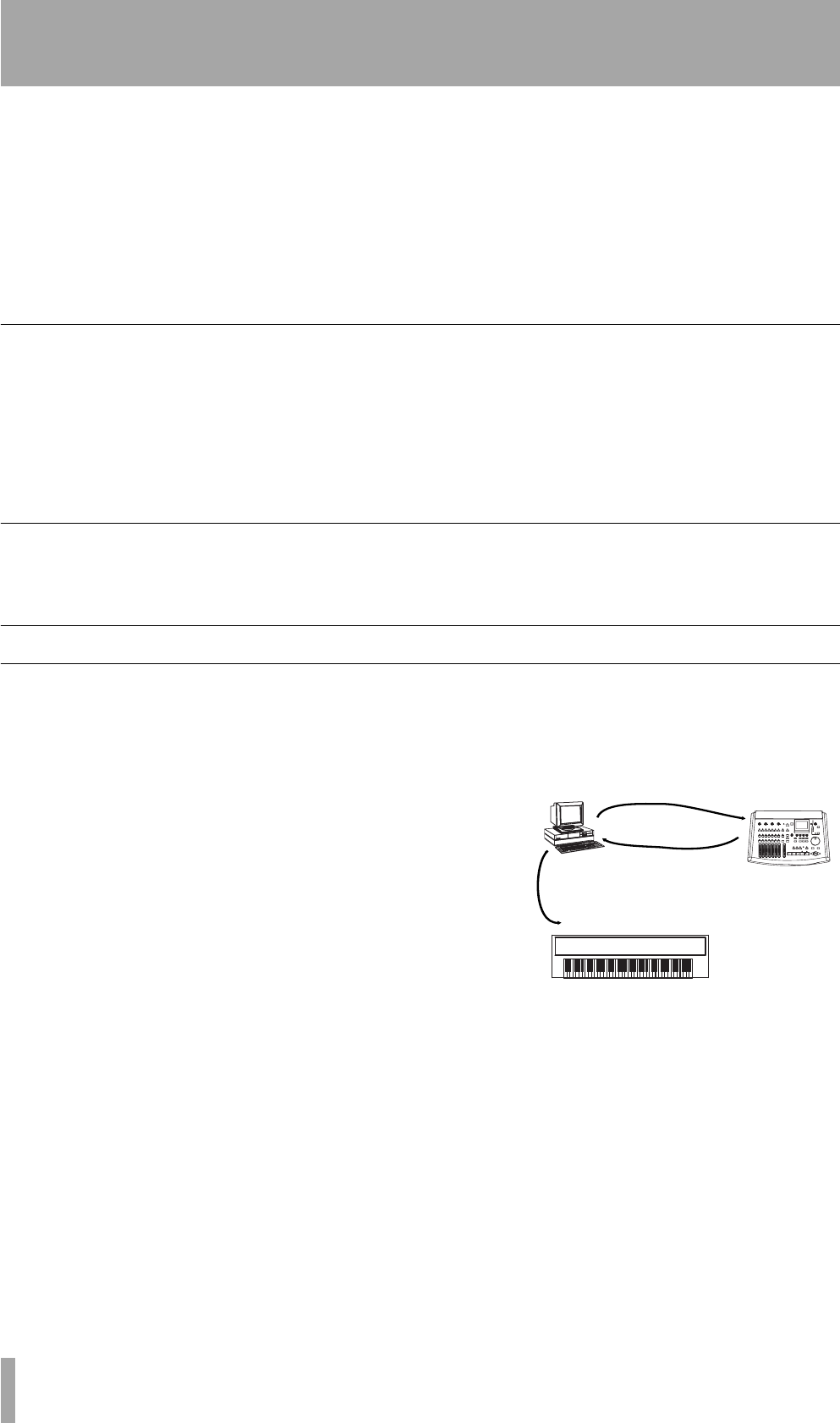
1 – Introductory concepts–MIDI external control (MMC, etc.)
16 TASCAM 788 Digital PortaStudio
When synchronizing acoustic recordings to MIDI
instruments using MTC, the 788 can act as a time-
code master or a slave with respect to your MIDI sys-
tem. Of course, your sequencer must be able to use
MTC in order to do this.
In other words, when the 788 acts as a timecode mas-
ter, the sequencer determines its playback/record
position from timecode received from the 788.
When the 788 acts as a timecode slave, the sequencer
sends out MTC to locate the 788 playback/record
position. Note that many computer sequencers are
not very accurate timecode masters, though—using
the 788 as a timecode slave is probably best if you
are going to use a stable MTC source, such as
another 788.
Tempo map synchronization
As well as timecode, there is another way in which
the 788 can be synchronized to MIDI sequencers,
which depends on the position in bars (measures) and
beats of a song .
The 788 is provided with a “tempo map”, which
allows it to recognize that bar 1 starts at timecode
time 00:00:00.00, and bar 2 starts 2 seconds later (for
example).
To use this method of synchronization, it is first nec-
essary to set up this tempo map, so that musical posi-
tions can be mapped to timecode times.
Sync track recording
In this method of synchronization, the 788 records a
MIDI timing clock data from the sequencer, and can
later use this information for synchronization and
song positioning.
MIDI external control (MMC, etc.)
As well as synchronization, the transport controls of
a sequencer can be used to control transport, etc.
functions on the 788.
Or, if you want to work the other way, MIDI com-
mands sent from the 788 can be used to control the
sequencer.
These commands are known as MIDI Machine Con-
trol commands (MMC). Any machine capable of
transmitting or responding to MMC may be provided
with a unique ID, from 0 to 127.
Note that it is possible for a machine such as the 788
to be a timecode slave at the same time that it is a
MMC master (i.e. MTC timing information is
obtained from an external source, but the transport
controls of the 788 are used to control other devices,
including possibly the timecode source) or vice
versa.
In the illustration below, the MIDI interface of the
computer is fitted with two outputs, one of which
provides the slaved 788 with the MMC transport
commands, and the other driving the synthesizer
bank, etc. The sequencer takes its timing from the
MTC output by the 788.
When starting synchronized playback, the sequence
of events is therefore that the sequencer first sends an
MMC Play command to the 788, which then locates
to that position and starts playback. Meanwhile, the
sequencer is waiting for MTC so that it can “lock in”
and start playback. When the 788 starts playing, this
MTC is received by the sequencer which then finally
starts playback to the synthesizer.
Carries MIDI
musical data to
synths, etc.
Carries MMC commands
to control 788 transport,
etc.
Carries MTC to
synchronize
sequencer
MIDI IN
MIDI IN
MIDI IN
MIDI OUT (2)
MIDI OUT (1)
MIDI OUT


















